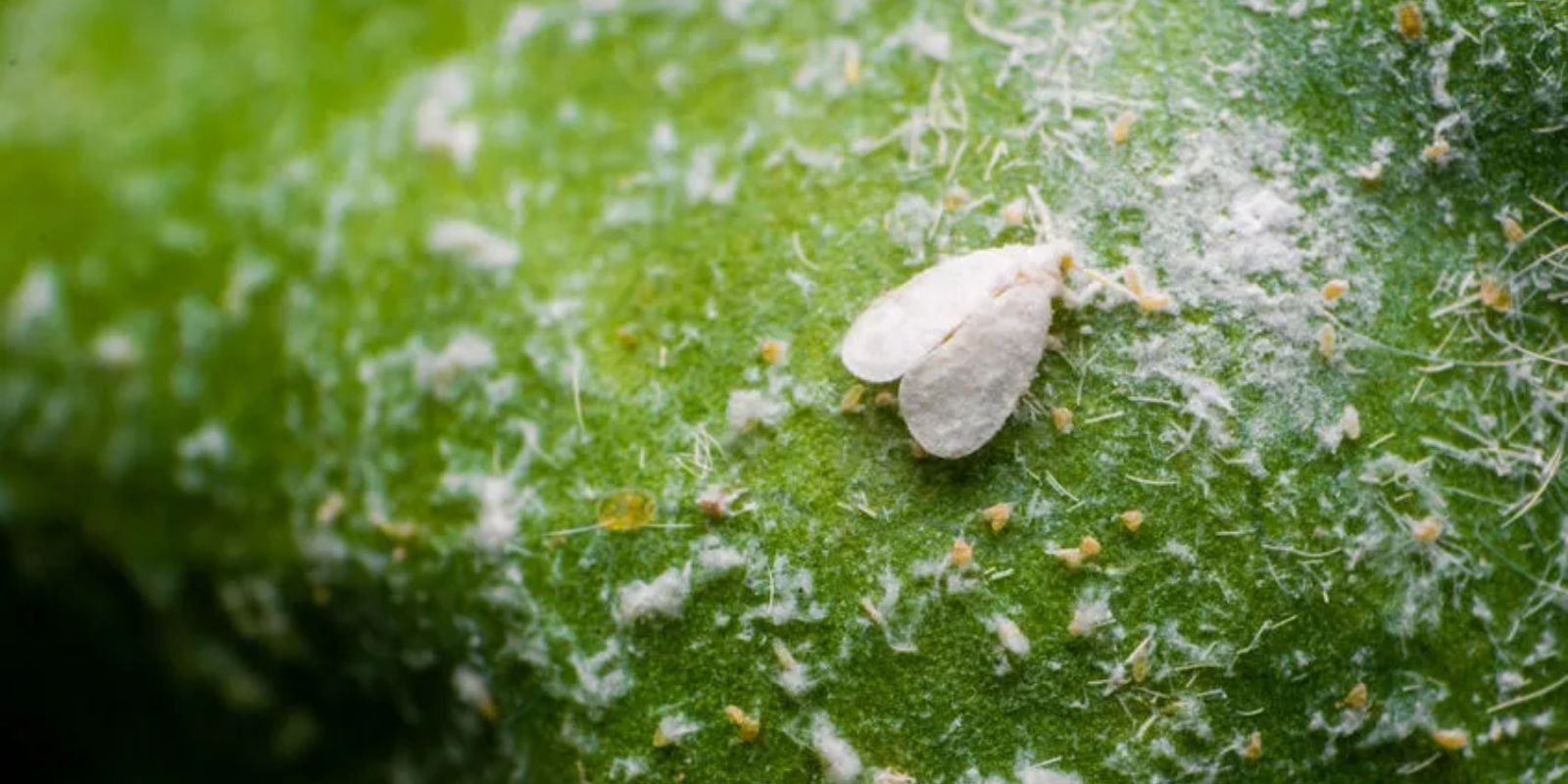Introduction
Whiteflies, though small, can cause significant damage to your garden. These tiny, sap-sucking insects not only weaken plants but also spread diseases and produce sticky honeydew that attracts other pests. When whitefly infestations spiral out of control, it’s essential to act swiftly and effectively. In this article, we’ll explore comprehensive strategies for managing and eradicating whiteflies to restore health to your garden.
Understanding Whiteflies
Whiteflies are tiny, winged insects that resemble small moths. They typically cluster on the underside of leaves and feed by piercing plant tissues with their mouthparts. The feeding process leads to yellowing and wilting of leaves and can ultimately stunt plant growth. Additionally, their honeydew excretions can lead to sooty mold, further damaging plants.
Step 1: Identify the Infestation
The first step in controlling whiteflies is to confirm their presence and assess the severity of the infestation. Look for the following signs:
- Clusters of Whiteflies: Examine the undersides of leaves for clusters of whiteflies, especially during warm, sunny weather when they are most active.
- Yellowing Leaves: Check for yellowing or wilting leaves, which indicate that plants are stressed from feeding.
- Sticky Residue: Look for sticky honeydew on leaves or surrounding surfaces, a common sign of whitefly activity.
Step 2: Implement Physical Controls
Physical controls are an effective first line of defense against whiteflies. These methods can help reduce the pest population without the use of chemicals:
- Sticky Traps: Place yellow sticky traps around the affected plants. Whiteflies are attracted to the color yellow and will get stuck on the traps, reducing their numbers.
- Insecticidal Soap: Spray the affected plants with insecticidal soap. This solution works by suffocating whiteflies and is safe for most plants. Ensure thorough coverage, including the undersides of leaves where whiteflies tend to congregate.
- Water Spray: Use a strong jet of water to dislodge whiteflies from plants. This method can be particularly effective for less severe infestations and helps to physically remove the pests.
Step 3: Use Biological Controls
Biological controls leverage natural predators to keep whitefly populations in check. Introducing beneficial insects can significantly reduce whitefly numbers:
- Ladybugs: Release ladybugs (also known as ladybird beetles) into your garden. These voracious predators feed on whiteflies and their larvae.
- Parasitic Wasps: Introduce parasitic wasps, such as Encarsia formosa or Eretmocerus eremicus, which lay their eggs inside whitefly nymphs. The developing wasp larvae feed on the whiteflies, eventually killing them.
- Lacewings: Lacewing larvae are another natural predator of whiteflies. They can be released into your garden to help control whitefly populations.
Step 4: Apply Organic Insecticides
If physical and biological controls are insufficient, organic insecticides can provide additional support. Choose options that are less harmful to beneficial insects and the environment:
- Neem Oil: Neem oil disrupts the life cycle of whiteflies by interfering with their ability to reproduce. It also has some repellent properties that can help keep whiteflies at bay.
- Horticultural Oil: Horticultural oils work by smothering whiteflies and their eggs. Apply the oil in the early morning or late evening to avoid harming beneficial insects and to prevent leaf burn.
- Diatomaceous Earth: This natural powder contains fossilized algae that abrades the exoskeletons of insects, causing them to dehydrate and die. Sprinkle it on the soil and plants to target whiteflies.
Step 5: Maintain Garden Health
Maintaining a healthy garden environment helps prevent whitefly infestations and reduces the risk of future outbreaks:
- Monitor and Rotate Crops: Regularly monitor your plants for signs of pests and rotate crops to minimize whitefly populations and prevent them from establishing a foothold.
- Improve Air Circulation: Ensure adequate spacing between plants to promote good air circulation. Whiteflies thrive in humid, stagnant environments, so increasing airflow can help deter them.
- Prune Infested Plants: Remove and dispose of heavily infested plant parts. This helps reduce the number of whiteflies and can prevent them from spreading to healthy plants.
Step 6: Consider Preventive Measures
Taking preventive measures can help protect your garden from future whitefly infestations:
- Companion Planting: Grow plants that repel whiteflies or attract beneficial insects. For example, marigolds can deter whiteflies, while herbs like basil and dill attract predatory insects.
- Reflective Mulch: Use reflective mulch or aluminum foil around plants to confuse and repel whiteflies. The reflection can disrupt their ability to locate plants and reduce their numbers.
- Regular Cleaning: Keep your garden clean and free of debris that can harbor pests. Regularly remove fallen leaves and other organic matter that can serve as a breeding ground for whiteflies.
Conclusion
Dealing with whiteflies requires a combination of immediate action and long-term strategies. By identifying infestations early, implementing physical and biological controls, and maintaining garden health, you can effectively manage and control whitefly populations. Remember that a healthy garden is less susceptible to pests, so investing in preventive measures can save you time and effort in the future. With these strategies, you’ll be well-equipped to protect your plants and enjoy a thriving garden. 🌿✨

